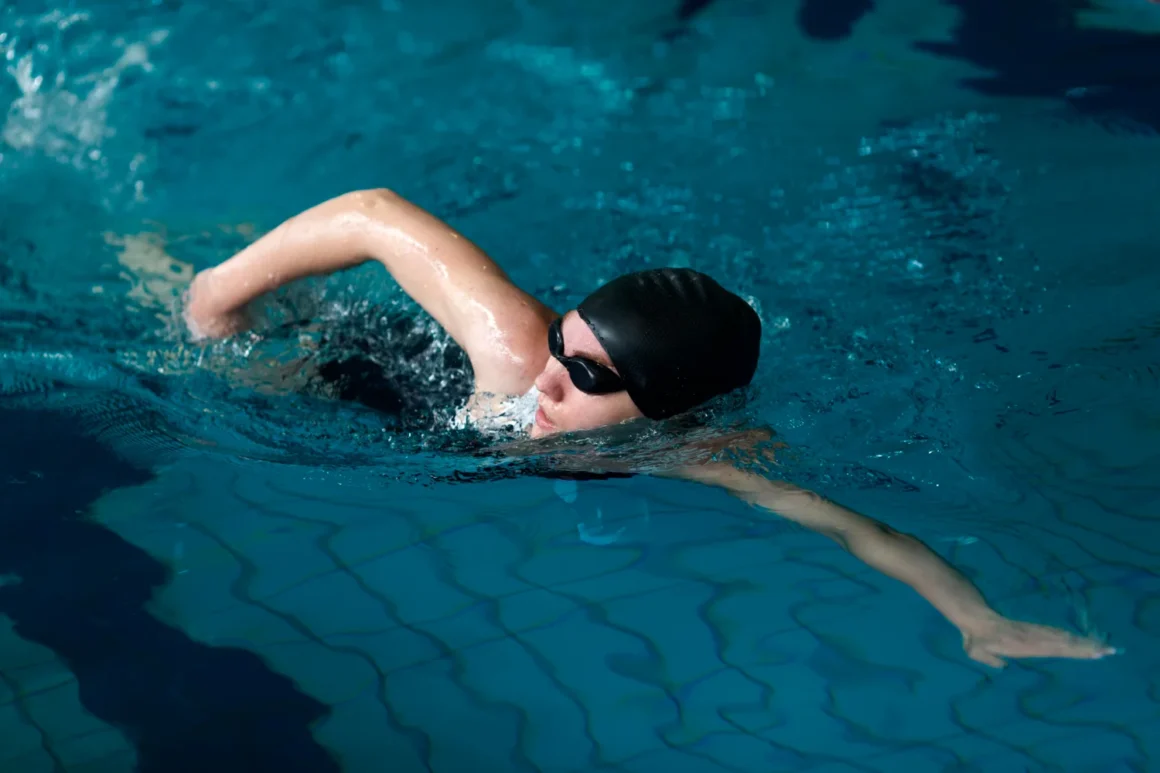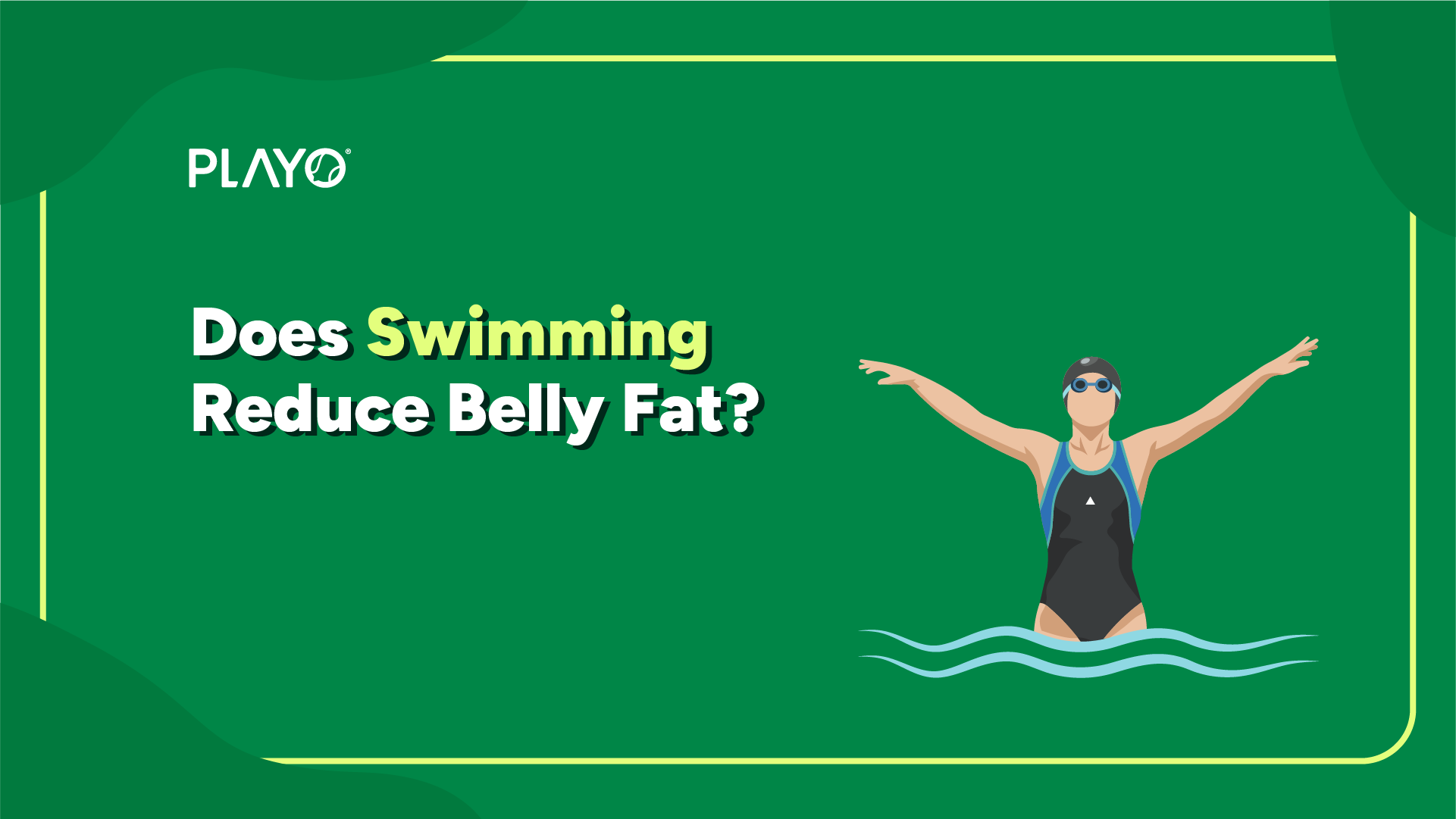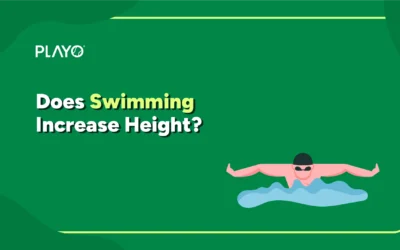Swimming supports overall fat loss and tones the body, but does it reduce belly fat? Belly fat is one of the most common concerns among individuals aiming to lose weight. It not only affects appearance but is also linked to increased health risks such as diabetes and heart disease. Among various exercises, swimming is often considered an effective option for burning calories and improving muscle tone. This raises a key question: Does swimming reduce belly fat?
Swimming can contribute to belly fat reduction by promoting overall fat loss, strengthening the core, and improving metabolism. However, no form of exercise can exclusively target fat in one area of the body. The reduction of belly fat occurs as part of a broader decrease in body fat percentage through consistent training and proper nutrition.
Understanding Belly Fat
Belly fat consists of two main components:
- Subcutaneous fat, located directly under the skin.
- Visceral fat which surrounds internal organs and poses higher health risks.
Visceral fat is metabolically active and can lead to conditions such as insulin resistance and cardiovascular disease. Reducing overall body fat is the only effective way to minimise both types. Since visceral fat is particularly stubborn and associated with deeper health risks, the concept of “spot reduction,” or losing fat in one specific area, is scientifically unproven. Therefore, when evaluating whether swimming helps in reducing belly fat, it is essential to understand that swimming promotes general fat loss, which subsequently includes fat around the abdominal region.
How Swimming Promotes Fat Loss
Swimming is a full-body, aerobic exercise that engages multiple muscle groups simultaneously. It improves cardiovascular endurance, burns calories, and develops lean muscle, all factors that contribute to fat reduction.
1. High Caloric Expenditure
Swimming burns between 400 and 700 calories per hour, depending on stroke intensity, technique, and duration. According to studies, the water’s density provides natural resistance, forcing the body to exert more effort than it would during most land-based exercises.
2. Engagement of Core Muscles
Proper swimming technique requires body alignment and core stabilisation. Each stroke activates the abdominal and back muscles, contributing to a stronger and more toned midsection. Regular core engagement also improves posture and balance.
3. Metabolic Benefits
Swimming increases heart rate and builds lean muscle, both of which elevate resting metabolic rate. A higher metabolism enhances calorie burning throughout the day, aiding long-term fat reduction.
4. Stress Regulation
High stress levels elevate cortisol, a hormone linked to abdominal fat accumulation. Swimming has been shown to reduce stress and promote relaxation, indirectly supporting fat loss by balancing hormonal responses.
Read More: 10 Swimming Facts
How to Burn Calories by Swimming Strokes?
The number of calories burned while swimming depends on the stroke type, intensity, and body weight. The following table provides an approximate calorie expenditure for a 60-minute session based on an average body weight of 70 kg (154 lbs).
| Swimming Stroke | Calories Burned (per hour) | Primary Muscles Engaged |
| Freestyle (Front Crawl) | 600–700 | Core, shoulders, legs |
| Butterfly | 700–900 | Core, chest, arms |
| Breaststroke | 400–600 | Chest, abs, thighs |
| Backstroke | 400–500 | Back, core, shoulders |
| Treading Water (Vigorous) | 400–600 | Core, legs |

Expert and Research Insights
Scientific and professional findings consistently indicate that swimming is effective for fat reduction when practised regularly and paired with a proper diet.
A study published in the Journal of Exercise Rehabilitation found that women who participated in one-hour swimming sessions three times per week for 12 weeks experienced measurable reductions in body fat percentage and waist circumference.
Some studies highlight that swimming offers both cardiovascular and muscular benefits, making it suitable for individuals aiming for long-term fat loss and toning.
Similarly, research states that swimming’s combination of aerobic activity and water resistance leads to calorie burning and muscle engagement across all major body regions.
The findings collectively indicate that swimming can reduce belly fat, not by targeting it specifically, but by facilitating total body fat loss.
Limitations of Swimming for Belly Fat Reduction
Although swimming is an effective form of exercise, it is not a standalone solution for abdominal fat loss. Several factors can influence its effectiveness:
1. Spot Reduction Is Ineffective
Fat loss occurs uniformly across the body and cannot be directed toward specific areas. Swimming engages the abdominal muscles but does not isolate belly fat for burning.
2. Insufficient Intensity
Low-intensity or irregular swimming sessions may not generate a significant calorie deficit. To achieve visible fat reduction, intensity and duration must be consistent and progressively challenging.
3. Dietary Influence
A calorie surplus negates the benefits of physical exercise. Even with regular swimming, fat reduction requires a controlled diet rich in lean proteins, vegetables, and whole grains while minimising processed foods.
4. Appetite Increase Post-Swimming
Swimming, particularly in cold water, can increase appetite and lead to higher calorie intake post-workout. Maintaining balanced nutrition is essential to prevent compensatory eating.
Effective Swimming Strategies for Fat Loss
To ensure that swimming contributes effectively to belly fat reduction, structured routines and proper technique should be followed.
1. Frequency and Duration
Engage in 30 to 60 minutes of swimming at least three to five times per week. Consistent sessions lead to sustained calorie burn and improved endurance.
2. Stroke Variation
Each swimming stroke targets different muscle groups:
- Freestyle: optimises calorie burn and endurance.
- Breaststroke: engages the chest and abdominal muscles.
- Butterfly: provides the highest calorie expenditure but requires a strong technique.
- Backstroke: improves spinal alignment and tones the core.
Alternating strokes prevents monotony and ensures balanced muscle development.
3. High-Intensity Interval Training (HIIT)
Incorporating intervals significantly increases fat-burning efficiency. For example:
- One fast lap (freestyle) for 30 seconds.
- One slow lap (breaststroke) for recovery (60 seconds).
Repeat for 20–30 minutes.
HIIT-style swimming enhances cardiovascular performance and post-exercise calorie burn.
4. Core Engagement
Maintaining abdominal tension during swimming enhances muscle activation. Keeping the spine aligned and hips elevated improves both efficiency and toning.
5. Complementary Strength Training
Adding resistance or bodyweight workouts two to three times per week increases muscle mass, which in turn boosts metabolism. Focus on planks, squats, and lunges to complement the effects of swimming.
6. Nutritional Balance
Combining swimming with a calorie-controlled diet yields optimal fat reduction. A balanced diet should include complex carbohydrates, lean proteins, and healthy fats.
Swimming Plan for Fat Reduction
Beginner Level (3 Days/Week)
- Warm-up: 10 minutes light freestyle
- Main set: 20 minutes steady breaststroke
- Cool-down: 10 minutes backstroke
Intermediate Level (4 Days/Week)
- Warm-up: 5 minutes freestyle
- Interval set: 4 × (2 laps fast freestyle + 2 laps slow backstroke)
- Core drills: 10 minutes treading water or flutter kicks
- Cool-down: 5 minutes easy swim
Advanced Level (5 Days/Week)
- Warm-up: 10 minutes moderate freestyle
- Main set: 30-minute interval training (freestyle and butterfly)
- Core exercises: 10 minutes (water crunches, leg raises)
- Cool-down: 5 minutes breaststroke
Progressive overload, which involves gradually increasing duration or intensity, ensures continuous improvement in fat-burning efficiency.
Conclusion
Swimming is a highly effective exercise for reducing body fat and improving muscle tone. While it does not specifically target abdominal fat, consistent swimming contributes to overall fat loss, which includes a reduction in belly fat over time. Its combination of cardiovascular activity, muscular engagement, and low joint impact makes it a sustainable long-term fitness option.
For optimal results, swimming should be paired with a controlled diet, adequate rest, and complementary strength exercises. The key factors are consistency, intensity, and overall lifestyle management. In summary, swimming can reduce belly fat, provided it is performed regularly and supported by a balanced, calorie-conscious approach.
Download Playo on Android or iOS, or visit playo.co to start playing!
Frequently Asked Questions
Both exercises are effective. Running typically burns more calories per minute, but swimming is gentler on joints and allows longer training durations.
To lose belly fat through swimming, aim for at least 45–60 minutes per session, 4–5 times a week. Consistent, moderate to high-intensity swimming helps burn calories and improve overall fat metabolism. However, results depend on factors like diet, intensity, and individual metabolism, so pairing swimming with a balanced diet is key.
Losing 5 kg in a month through swimming alone is quite ambitious but possible with an intense routine and proper nutrition. You would need to create a calorie deficit of about 1,000 calories per day, which means combining daily swimming (60–90 minutes) with a calorie-controlled diet. Realistically, a healthy and sustainable weight loss rate is 2–3 kg per month.
The butterfly stroke and freestyle (front crawl) are the most effective for burning belly fat because they engage the core, abs, and obliques intensely while demanding high energy output. The breaststroke is also beneficial for toning the midsection, but burns slightly fewer calories compared to butterfly or freestyle.
Yes, freestyle swimming can help reduce belly fat when done regularly and with intensity. It works multiple muscle groups, including your core, shoulders, and legs and boosts calorie burn. For best results, combine freestyle laps with interval training by alternating between fast and slow speeds and maintain a nutrient-balanced diet.





0 Comments